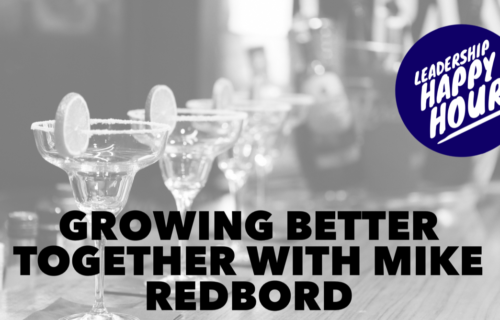Take No Prisoners!
 The organization I inherited was a mess! I should have remembered that NAVY stood for Never Again Volunteer Yourself when I raised my hand for the job to be the Director of Security for Naval District Washington, DC. We didn’t have enough people to do the essentials, we were way under budgeted, and morale was in the toilet. Everything was going 1000 miles an hour and there was absolutely no way I could sit back and think about my job in its totality because, when I did, the questions of self doubt would start flashing through my head. Who was I kidding? I graduated in the bottom 25% of my high school class, got voted “class clown” out of 600 kids, and here I was responsible for the safety and security of 25,000 people on multiple Navy Installations in Washington, DC? Certainly, I was way out of my league. There was no time for this! The people I led needed decisions made. Decisions that impacted the security of where they worked, their quality of life, and (ultimately) the people we served. My predecessor failed to make those critical decisions and that’s how our current mess evolved. When we, as leaders, are faced with times of trial, we must be steady at the helm. When chaos abounds, we must be firm in our resolution to make decisions, move forward, and lead the way – even when the chatter in our head is telling us to retreat. I was able to move past that chatter by using my own “LUTZ” decision-making matrix (acronyms are infinitely easier to remember if they’re your last name).
The organization I inherited was a mess! I should have remembered that NAVY stood for Never Again Volunteer Yourself when I raised my hand for the job to be the Director of Security for Naval District Washington, DC. We didn’t have enough people to do the essentials, we were way under budgeted, and morale was in the toilet. Everything was going 1000 miles an hour and there was absolutely no way I could sit back and think about my job in its totality because, when I did, the questions of self doubt would start flashing through my head. Who was I kidding? I graduated in the bottom 25% of my high school class, got voted “class clown” out of 600 kids, and here I was responsible for the safety and security of 25,000 people on multiple Navy Installations in Washington, DC? Certainly, I was way out of my league. There was no time for this! The people I led needed decisions made. Decisions that impacted the security of where they worked, their quality of life, and (ultimately) the people we served. My predecessor failed to make those critical decisions and that’s how our current mess evolved. When we, as leaders, are faced with times of trial, we must be steady at the helm. When chaos abounds, we must be firm in our resolution to make decisions, move forward, and lead the way – even when the chatter in our head is telling us to retreat. I was able to move past that chatter by using my own “LUTZ” decision-making matrix (acronyms are infinitely easier to remember if they’re your last name).
Listen
The first part of this matrix concerns listening. Please note that I didn’t say communicating. Yes, I think that knowing where you are going and communicating that is crucial but you can’t get to that point without first listening. The best suggestions for the decisions that needed to be made came from the people around me who would be responsible for carrying out those decisions. The people on the beat, the customers on the street, and the superiors that I’d greet (had to make that rhyme) knew what would make our machine run better. I just had to have my ears open and hear them when they spoke.
Understand
The second part of this matrix is about understanding. When I volunteered for that job, I knew next to nothing about physical security or police work. What I did know was how to research. I read all of the manuals, went through whatever training I could, and picked the brains of anyone who allow me to use their grey matter. I had to understand how it all fit together – the wants of my people, the needs of my customers, and the strategic vision of the organization. Without that understanding, it would have been impossible to make any effective decisions. Sure, I could have made make plenty of “shoot from the hip” decisions but that would have resulted in further complicating our situation. We must know and understand.
Take No Prisoners
Taking no prisoners is about attitude. It’s about blocking out the self-destructive chatter that can make you second-guess every decision and keep you from making any decisions at all. It’s about risk and not waiting for the next big piece of information before you can move ahead – the speed at which information comes to us now there is always something more to come and something more to keep us from making a decision. I had listened, worked to understand and now it was “go” time. Some of the decisions we face are not going to be popular. Some of the decisions are going to impact on a much larger scale than was previously anticipated. Regardless, the decisions have to be made so takek a deep breath, call the shot, and move forward.
“Z” (See) it Through
Once the course is set, it’s time to push forward. With a difficult path, we might think about going back and changing our original decision. If this chatter starts rambling through your head, go back to the previous step. I am not against re-evaluating a path for the sake of improvement, but we should never shroud a difficult path under this guise. We never move ahead by taking it easy! Make a commitment, keep a commitment, and keep it going.
In the end, the difference between a good leader and a great leader can come down to a matter of moments. The moments we are given to make the critical decisions that need to be made when it counts the most. Those are the times the risk (as well as the reward) is the greatest and are the times that your people need your steady hand on the helm the most. We went from a rag tag dis-organization to an organization that was efficient, effective, and had team members who WANTED to be there in less than a year. Was decision making the only thing that took us there? No, but without it we would have remained in a stagnant cesspool of confusion and bad morale. Don’t get mired in the muck – decide to step up, step out and make the decisions!




